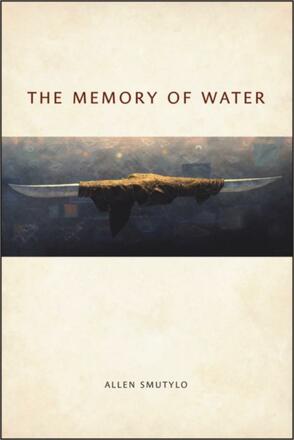
Description
Adventurer, writer, and artist Allen Smutylo has experienced some of the wildest and most captivating waters imaginable in all corners of the globe. The stories in The Memory of Water—all of them accompanied by the author’s own stunning artwork—describe his adventures in the Arctic, South Pacific, Great Lakes region, and India.
In the Arctic he is attacked by a polar bear, stalked by a rogue walrus, and nearly drowns in ferocious waters. But his Arctic stories also celebrate human creativity as they recount the life of the pre-Inuit people, who, hunting in a changing environment, endured many hardships and developed new technologies, such as the sea kayak, to cope.
Other stories include an account of a sojourn in a small Georgian Bay fishing village as a young artist, an adventure on an urban river in southwestern Ontario, and a portrayal of the complex underwater world of the South Pacific. Travelling the River Ganges in India, the author finds that a massive misuse of water is complicated by a billion people’s faith-based adoration of the same water.
The Memory of Water probes a crucial and contemporary issue—that of our relationship to water and the wildlife and human life that depends upon it. This book will appeal to anyone interested in the natural world, in artistic depictions of it, or in a good story well told.
Reviews
“This poetic and gently sublime book takes us on a journey of discovery of ‘our home wrapped in water.’ Smutylo’s is an odyssey of wonder and exploration encompassing the High Arctic and Greenland, Maui and Varanasi, and a picturesque river valley in southwestern Ontario. By combining a deep respect for what he sees and senses, and an appreciation for what he shares in common with the worlds he explores, Smutylo casts us on our own water-borne voyages through memories and experiences, places and cultures that ebb and flow in our consciousness, defining our sense of place and self as passengers on this drop of water called ‘Earth’ in the vast sea of constellations.”
- Tom Smart, author of <i>Jack Chambers’ Red and Green</i>
“In The Memory of Water we accompany Canadian traveller, writer, and artist Allen Smutylo on some of his journeys. The ten stories span great geographical distances as well as a large period of time, from Tobermory in 1970 to Varanasi in 2010. As Smutylo writes in his introduction, these stories share the presence of water, be it oceans, rivers, snow, or icebergs. The stories are humourous and political, personal and historical. Most are thought-provoking and highly engaging. In addition, several of these accounts show signs of Smutylo’s perspectives as an artist with references to viewpoints, colours, light, shadow and movement. In my mind, it is exactly this artistic view that makes this publication interesting to read. In particular, I was captured by Smutylo’s thoughts on the representation of people and places. These thoughts deal with practical challenges (How to convey the movement of water? How to portray the reticent knifemaker?), as well as issues of a philosophical character, such as when he reflects upon how artists embellish in order to see things in new ways or when he writes about the role of the kayak in his art. Throughout, these ponderings are accompanied and supplemented by Smutylo’s diverse and truly beautiful artwork.”
- Janicke S. Kaasa
“Smutylo is an aesthete and environmentalist, a wilderness painter whose representations of extreme landscapes through an artistic, rather than photographic, lens embrace cultural perspectives—from the stark Arctic ocean that shaped successive Indigenous Polar cultures, to the crowded banks of the Ganges river where Hindu culture thrives at the intersection of tradition and adaptive innovation. Places of Smutylo’s original artwork are found throughout The Memory of Water, providing an extra 1000 words of textual descriptions each time.... Vivid contemporary adventure is interleaved with stories of successive circumpolar cultural groups—the Independence, Thule, Dorset, and Inuit peoples—and those physical elements of their cultures that remain on the land. In a poignant example, the brutal strength of real polar bears (who munch through metal ration barrels and circle tents at night) is contrasted with the stark spiritual power of tiny ivory polar bear carvings left as talismans on the land for over 3000 years. To stumble on either—megafauna or microcarving—is a treasure of experience, and Smutylo’s meditations on the cultural imperatives of water traverse cultural contexts.... In each essay in The Memory of Water we are reminded of the uncertainties that individual human lives, and collectively determined human cultures, face in terms of survival on our water-filled planet. Beyond their informative value, both The Memory of Water and Travelling the 38th Parallel are very much tributes to the joys of travel and the richness of learning first-hand from place. If, like me, you have enjoyed learning by shorter journeys and have wished to travel more, then reading these books will be something like pressing your nose against the glass of an all-you-can-eat buffet—you’ll finish with a longing to get your feet wet, and push away from shore.”
- Sandy M. Bonny, University of Saskatchewan